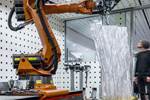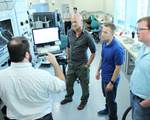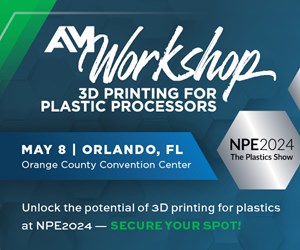DSM’s Glass-Filled Polypropylene for Demanding Applications
Glass-filled polypropylene (PP) pellet material was developed especially for 3D printing, enabling easy and consistent production of structural and demanding applications using fused granulate fabrication technology.
Share
Read Next
Royal DSM’s Arnilene AM6001 GF is a glass-filled polypropylene (PP) pellet material which has been developed especially for 3D printing, enabling easy and consistent production of structural and demanding applications using fused granulate fabrication technology.
According to the company, polypropylene is widely used for its mechanical, thermal and chemical performance, and is the second most frequently used polymer worldwide. Automotive, industrial or infrastructure manufacturers looking to adopt additive manufacturing (AM) technology for low-volume or decentralized production (where the elimination of tools helps decrease cost) may want to use the same material they are familiar with from traditional manufacturing.
To meet this growing need, DSM developed Arnilene AM6001 GF (G), a glass-filled PP for fused granulate fabrication (FGF) suitable for AM. It stems from the same base material used in high-volume production and is optimized for FGF 3D printing. DSM says it combined materials knowhow, expertise in modeling and simulation, design for AM (versus traditional manufacturing) and printing expertise to achieve all of the desirable mechanical, thermal and chemical performance of glass-filled PP with the flexibility of a proven 3D process.
The company says that Arnilene AM6001 GF (G) is well-suited for direct printing of structural, lightweight applications for automotive, infrastructure and water management, as well as tooling. DSM’s AM experts worked with equipment partners to validate the material on closed and open chamber build printers to optimize the material for FGF printing. The material’s low carbon footprint (due to reduced energy consumption) and its low Life Cycle Assessment (inherent to the PP’s chemistry) make it a sustainable solution.
Related Content
-
New Zeda Additive Manufacturing Factory in Ohio Will Serve Medical, Military and Aerospace Production
Site providing laser powder bed fusion as well as machining and other postprocessing will open in late 2023, and will employ over 100. Chief technology officer Greg Morris sees economic and personnel advantages of serving different markets from a single AM facility.
-
How to Build 10,000+ Shot Molds in Hours
Rapid tooling isn’t so rapid when it takes days to 3D print a metal mold, and then you still must machine it to reach the necessary tolerances. With Nexa3D’s polymer process you can print a mold in hours that is prototype or production ready and can last for more than 10,000 shots.
-
3D Printing with Plastic Pellets – What You Need to Know
A few 3D printers today are capable of working directly with resin pellets for feedstock. That brings extreme flexibility in material options, but also requires greater knowledge of how to best process any given resin. Here’s how FGF machine maker JuggerBot 3D addresses both the printing technology and the process know-how.











